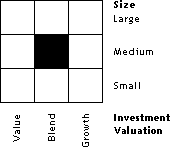Nasdaq - Delayed Quote • USD
Fidelity Real Estate Index (FSRNX)
At close: 8:01 PM EDT
Fund Summary
The fund normally invests at least 80% of assets in securities included in the MSCI U.S. IMI Real Estate 25/25 Index. It lends securities to earn income for the fund.
Fidelity Real Estate Index
Boston, MA 02109
82 Devonshire Street
Fund Overview
| Category | Real Estate |
| Fund Family | Fidelity Investments |
| Net Assets | 2.57B |
| YTD Return | -1.14% |
| Yield | 2.88% |
| Morningstar Rating | |
| Inception Date | Sep 08, 2011 |
Fund Operations
| Last Dividend | 0.45 |
| Last Cap Gain | -2.00 |
| Holdings Turnover | 13.00% |
| Average for Category | -- |
Fees & Expenses
| Expense | FSRNX | Category Average |
|---|---|---|
| Annual Report Expense Ratio (net) | 0.07% | 1.08% |
| Prospectus Net Expense Ratio | 0.07% | -- |
| Prospectus Gross Expense Ratio | 0.07% | -- |
| Max 12b1 Fee | -- | -- |
| Max Front End Sales Load | -- | 5.10% |
| Max Deferred Sales Load | -- | 1.13% |
| 3 Yr Expense Projection | 0 | -- |
| 5 Yr Expense Projection | 0 | -- |
| 10 Yr Expense Projection | 0 | -- |
Management Information
Morningstar Style Box

Morningstar Category
Related Tickers
RYZCX Rydex Precious Metals C
27.45
+3.16%
RYPMX Rydex Precious Metals Inv
37.94
+3.15%
RYMNX Rydex Precious Metals Fund
35.21
+3.13%
RYMPX Rydex Precious Metals Fund
33.77
+3.11%
FSELX Fidelity Select Semiconductors
29.15
+2.71%
FELIX Fidelity Advisor Semiconductors I
79.28
+2.68%
FIKGX Fidelity Advisor Semiconductors Z
79.45
+2.68%
FELTX Fidelity Advisor Semiconductors M
68.42
+2.67%
FELCX Fidelity Advisor Semiconductors C
58.62
+2.66%
FELAX Fidelity Advisor Semiconductors A
73.29
+2.66%
FKRCX Franklin Gold and Precious Metals Fund
18.45
+2.50%
FRGOX Franklin Gold and Precious Metals Fund
16.16
+2.47%
FGPMX Franklin Gold and Precious Metals R6
20.34
+2.47%
FGADX Franklin Gold and Precious Metals Adv
20.04
+2.45%
FEGIX First Eagle Gold I
26.69
+2.38%
FEURX First Eagle Gold R6
26.76
+2.37%
FEGOX First Eagle Gold C
23.33
+2.37%
SGGDX First Eagle Gold A
25.80
+2.34%
FSRFX Fidelity Select Transportation
108.88
+2.00%
RYSIX Rydex Electronics Inv
396.18
+1.83%
RYSAX Rydex Electronics H
349.10
+1.83%
RYELX Rydex Electronics Fund
360.29
+1.83%
RYSCX Rydex Electronics C
304.99
+1.83%
TAVZX Third Avenue Value Z
70.23
+1.15%
TAVFX Third Avenue Value Instl
70.25
+1.15%
CNPSX Consumer Staples UltraSector ProFund Svc
62.05
-0.37%
FNARX Fidelity Natural Resources Fund
48.32
+1.13%
TVFVX Third Avenue Value Investor
70.75
+1.13%
CNPIX Consumer Staples UltraSector ProFund Inv
71.41
-0.36%
KINCX Kinetics Internet Adv C
55.90
+1.07%
WWWFX Kinetics Internet No Load
75.61
+1.06%
KINAX Kinetics Internet Adv A
68.32
+1.05%
FCGCX Fidelity Advisor Global Commodity Stk C
19.08
+0.95%
FFGAX Fidelity Advisor Global Commodity Stk A
19.19
+0.95%
BPTUX Baron Partners R6
144.23
+0.92%
BPTRX Baron Partners Retail
138.43
+0.92%
BPTIX Baron Partners Institutional
144.25
+0.92%
FIQRX Fidelity Advisor Global Commodity Stk Z
19.17
+0.89%
FFGTX Fidelity Advisor Global Commodity Stk M
19.17
+0.89%
FFGIX Fidelity Advisor Global Commodity Stk I
19.20
+0.89%
FFGCX Fidelity Global Commodity Stock
19.22
+0.89%
BWBIX Baron WealthBuilder Institutional
17.61
-0.45%
INAAX ALPS/Kotak India ESG A
17.93
+0.79%
INDAX ALPS/Kotak India ESG Inv
17.97
+0.79%
INFCX ALPS/Kotak India ESG C
16.05
+0.75%
ENPSX ProFunds UltraSector Energy Svc
41.58
+0.75%
INDIX ALPS/Kotak India ESG I
18.80
+0.75%
FMEIX Fidelity Covington Trust - Fidelity Enhanced Mid Cap ETF
16.15
+0.75%
ENPIX ProFunds UltraSector Energy Investor
48.92
+0.74%
FMCKX Fidelity Advisor Focused Emerging Markets Fund
27.69
0.00%
TLVAX Timothy Plan Large/Mid Cap Value Fund
23.73
+0.68%
FZAEX Fidelity Advisor Focused Emerging Markets Fund
29.85
0.00%
FIMKX Fidelity Advisor Focused Em Mkts I
29.91
0.00%
TMVIX Timothy Plan Large/Mid Cap Value Fund
24.05
+0.67%
TLVCX Timothy Plan Large/Mid Cap Value Fund
16.84
+0.66%
FTMKX Fidelity Advisor Focused Em Mkts M
29.45
0.00%
ERSTX Eaton Vance Large-Cap Value R
25.02
0.00%
FIKAX Fidelity Advisor Energy Z
53.13
+0.63%
FAGNX Fidelity Advisor Energy M
51.57
+0.62%
FANIX Fidelity Advisor Energy I
53.21
+0.62%
FANAX Fidelity Advisor Energy A
50.13
+0.62%
FSENX Fidelity Select Energy Portfolio
65.25
+0.62%
FNRCX Fidelity Advisor Energy Fund
45.72
+0.62%
MBXAX Catalyst/Millburn Hedge Strategy A
39.63
+0.61%
NEEIX Needham Growth Institutional
68.19
+0.60%
MBXFX Catalyst/Millburn Hedge Strategy C-1
38.26
+0.60%
MBXIX Catalyst/Millburn Hedge Strategy I
39.93
+0.60%
EHSTX Eaton Vance Large-Cap Value A
25.10
0.00%
MBXCX Catalyst/Millburn Hedge Strategy C
38.52
+0.60%
NEEGX Needham Growth Retail
65.40
+0.58%
VRMGX Virtus KAR Mid-Cap Growth R6
58.90
-0.29%
KNPYX Kinetics Paradigm Instl
83.45
+0.54%
KNPAX Kinetics Paradigm Adv A
78.29
+0.54%
WWNPX Kinetics Paradigm No Load
82.31
+0.54%
KNPCX Kinetics Paradigm Adv C
70.02
+0.53%
PDEQX PGIM Jennison Emerging Markets Eq OppsR6
15.27
+0.53%
KMKAX Kinetics Market Opportunities Adv A
48.21
+0.52%
GQGIX GQG Partners Emerging Markets EquityInst
17.42
+0.52%
MOWNX Moerus Worldwide Value N
15.61
+0.52%
MOWIX Moerus Worldwide Value Institutional
15.64
+0.51%
KMKNX Kinetics Market Opportunities No Load
49.08
+0.51%
KMKCX Kinetics Market Opportunities Adv C
45.69
+0.51%
KMKYX Kinetics Market Opportunities Inst
49.91
+0.50%
DODFX Dodge & Cox International Stock Fund
50.28
+0.50%
DGIFX Disciplined Growth Investors
28.70
+0.49%
GQGPX GQG Partners Emerging Markets Equity Inv
17.31
+0.46%
TORCX Tortoise Energy Infrastructure Total Return Fund
15.20
+0.46%
PDEZX PGIM Jennison Emerging Markets Eq Opps Z
15.23
+0.46%
GQGRX GQG Partners Emerging Markets Equity R6
17.42
+0.46%
GMOWX GMO Resources Fund
22.11
+0.45%
GOVIX GMO Resources Fund
22.11
+0.45%
GAAHX GMO Resources Fund
22.16
+0.45%
GEACX GMO Resources I
22.18
+0.45%
GOFIX GMO Resources Fund
22.19
+0.45%
TORTX Tortoise Energy Infrastructure Total Return Fund
15.60
+0.45%
TORIX Tortoise Energy Infrastructure Total Return Fund
15.85
+0.44%
VMMSX Vanguard Emerg Mkts Sel Stk Inv
21.21
+0.43%
HIMDX Hennessy Cornerstone Mid Cap 30 Instl
23.69
+0.42%
EVDAX Camelot Event Driven A
19.32
+0.42%
KSOAX Kinetics Small Cap Opportunities Adv A
108.46
+0.41%